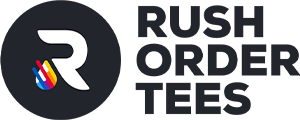Has the Fashion Industry Figured Out Inclusion? [Survey]
Key Takeaways
- 71% of respondents perceived the stores they frequent to be inclusive.
- It was reported that plus-sized models were the most represented (58%) and models with disabilities (21%) were the least represented by brands respondents shopped with.
- 80% of respondents felt the fashion industry is making an effort to be more inclusive.
- Fashion Nova was identified as a top five brand for inclusivity.
Last year, as the Black Lives Matter movement grew in momentum, many industries were put under a magnifying glass and asked to increase diversity, equality, and inclusion. For decades, a specific standard of beauty has engulfed the fashion industry. However, the past year has been transformative, as the world made a conscious effort to change the system for people of color and others. Fashion retailers around the nation are shooting their shot at redefining their clothing to be more inclusive.
To determine how sentiment regarding inclusion in the fashion industry has shifted, we surveyed 1,000 individuals who identify as LGBTQ+, plus-sized, BIPOC, disabled, or senior (55+). How did purchase behavior differ among these five groups? Did they feel that brands were making an effort and hitting the mark? Were certain groups more represented than others? What changes could be made to create a more inclusive industry? Keep reading to learnmore about the transformation the fashion industry has been undergoing.
Finding Your Fit
To assess how the fashion industry is changing, people of color, people who identify as LGBTQ+, people with disabilities, and seniors were surveyed. How inclusive did they perceive the stores they shopped at to be? Were they able to find clothing that fit but was also trendy and expressed their identity?
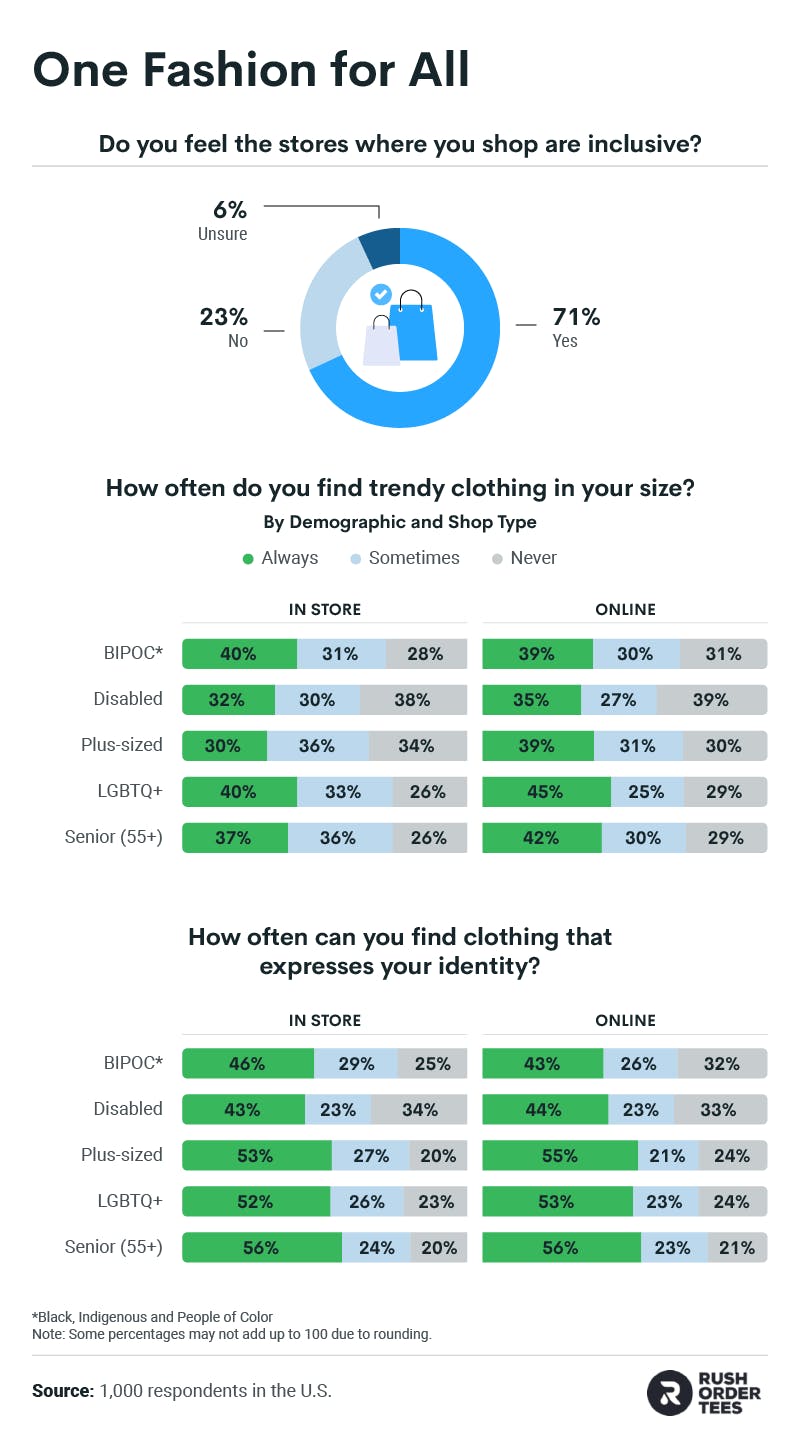
Diversity in branding is increasing, as proven by the fact that 71% of our respondents believed the stores they shop at to be inclusive. Nevertheless, there is still room for improvement with nearly 1 in 4 reporting that the stores they shop are not inclusive. Inclusion means more than diverse advertising campaigns, however. True inclusion lies behind the scenes and can be measured by how many minorities are employed by a given company and at what level.
Respondents were also asked about their experiences shopping online and in store. Individuals with a disability had the most difficulty finding trendy clothing in their size both in store and online. Only 35% of disabled people were always able to find fashionable clothing that fit them, even when they had the entire internet at their disposal. LGBTQ+ individuals had the greatest chances of finding trendy clothing within their size range. When shopping in the store they reported always finding trendy clothing that fit 40% of the time, while online numbers jumped to 45%.
When it came to finding clothing that expressed their identity, seniors aged 55 and over had the easiest time. Both in store and online, 56% reported always being able to find something that expressed their identity. Unfortunately, individuals with disabilities reported struggling the most in this category too, with 34% reporting that they were never able to find clothing that adequately expressed their identity in store, and 33% online.
In general, most groups had a better experience finding trendy clothing that fit or that expressed their identity online than in store. However, this was different for BIPOC individuals. They reported being able to find clothes in both categories in store more often than they could online. This is curious because generally stores offer a greater variety of options online; but perhaps the numbers are influenced by the fact that many people preferred to shop in a brick-and-mortar store until the outbreak of COVID-19. In this post-pandemic world, it is expected that by 2025, nearly half of American apparel spending will be online.
Inclusivity’s Influence on Purchase Behavior
The vast majority (80%) of respondents agreed that the fashion industry is making an effort to become more inclusive. However, is the representation of certain groups more common than others? How did inclusivity affect the purchase behavior of the different respondent groups?
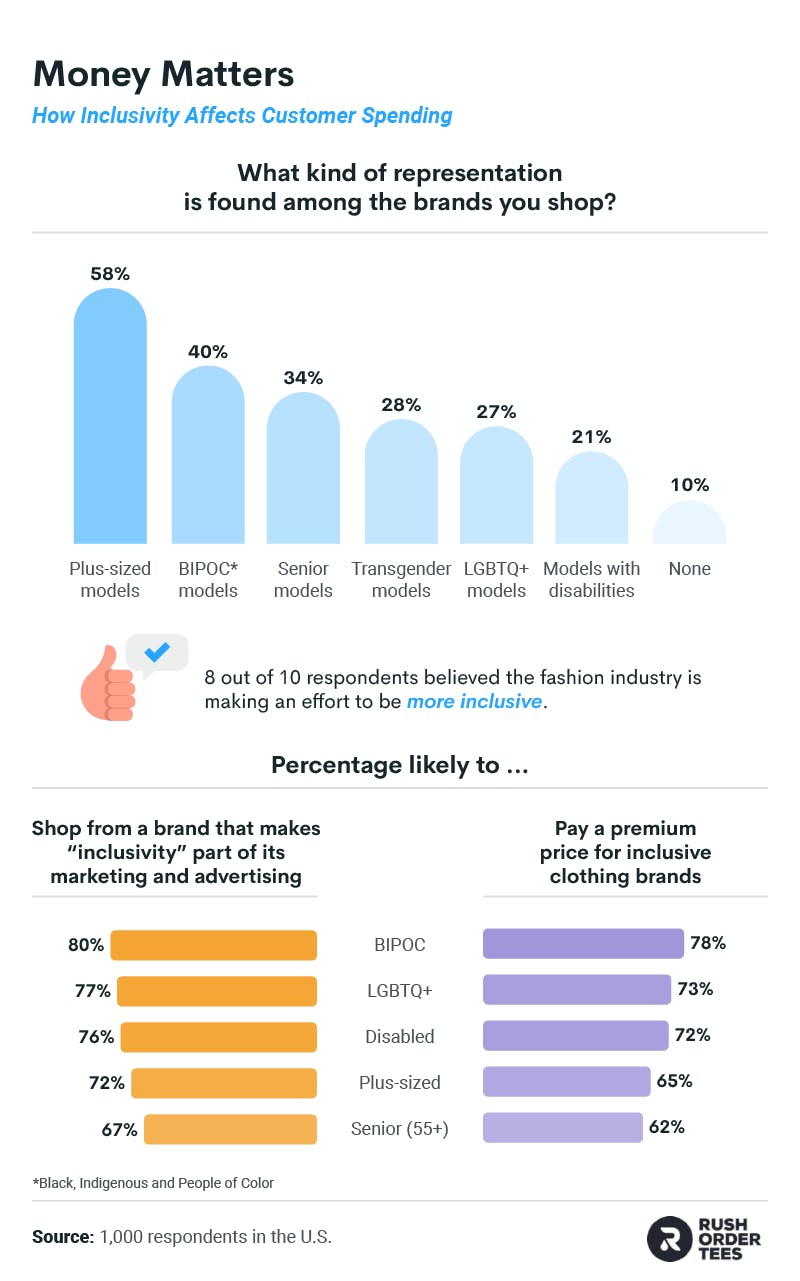
Respondents were asked about the kind of representation shown by the brands they shop with. At 58%, plus-sized models were most commonly shown. However, those surveyed also reported representation of BIPOC (40%), senior (34%), transgender (28%), LGBTQ+ (27%), and models with disabilities (21%). Only 10% said that none of these demographics were represented by the brands they shop with.
All of our respondent groups were more likely to shop at a brand that incorporated inclusivity into their marketing and advertising. BIPOC people (80%) were most likely to agree with this sentiment, while seniors (67%) were the least likely to have strong feelings on this subject.
Although they were more likely to shop at brands they deemed to be inclusive, were respondents willing to pay more to do so? Respondents agreed with this but at slightly lower rates than above. Again BIPOC individuals (78%) were the most likely to agree with this, while seniors (62%) were the least. Almost 3 out of 4 disabled people said they’d pay a premium for a brand that is inclusive, which is logical since they have the most difficulty finding trendy clothes that fit while also expressing their identity.
Room for Improvement
Now that we know consumers are more likely to pull the trigger and buy from brands they deem inclusive, we asked respondents additional questions about what that really means. Which demographics must a brand consider to be truly inclusive? How could the fashion industry, in general, do better? Are any inclusivity attempts harmful to consumers?
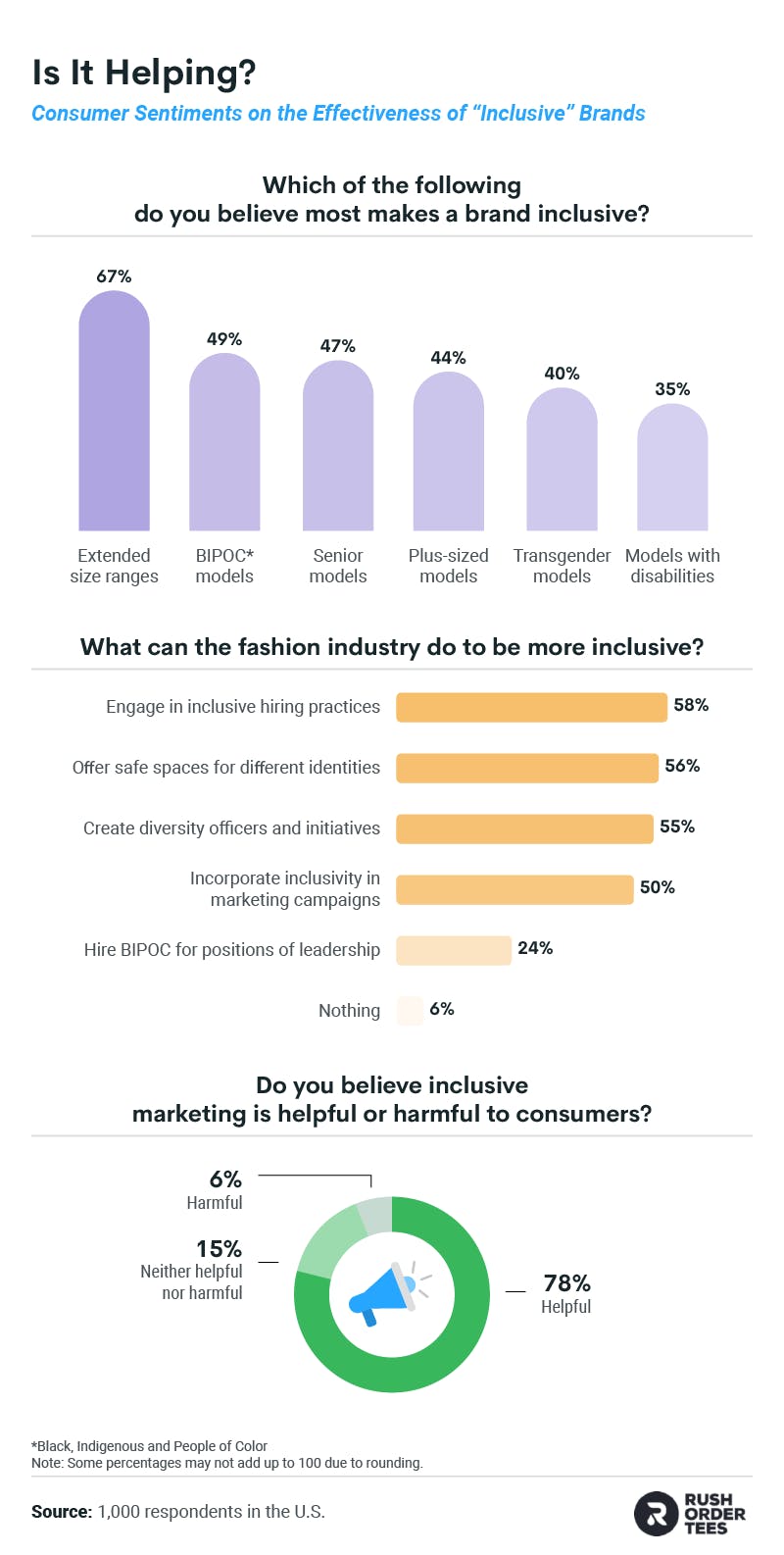
According to our respondents, the best way for a brand to improve its inclusivity was to offer an extended range of sizes (67%). In women’s clothing, the term plus-size is used to refer to anyone that wears a size 16 or beyond. However, the average American woman ranges from a size 16 to 18, so it’s important that models are representative of this and that extended sizes are available not just online but in store as well. Otherwise, retailers risk decreasing their market and frustrating or upsetting the average consumer.
Generally, respondents believed that inclusive marketing was helpful to consumers (78%). Only 6% thought it could be harmful. LGBTQ+ respondents were the most likely to say inclusive efforts in the fashion industry had been helpful, while plus-sized respondents were the most likely to say that these inclusion efforts could be harmful. A recent example of this could be Old Navy’s “Bodequality ” campaign, which launched in August of this year and includes the use of models and mannequins in sizes 4, 12, and 18. The campaign also launched extended size ranges for in-store shoppers – but bizarrely, opted to make just one size available online only. For many, this spotlight on size 30 shoppers was considered unnecessarily offensive.
In order to make the fashion industry a more inclusive environment, respondents said engaging in inclusive hiring (58%), offering safe spaces for different identities (56%), and creating diversity officers and initiatives (55%) were more important than showing inclusivity in marketing campaigns (50%). These opinions differed based on the survey group. Inclusive marketing was most important to women 55 years old and older, and inclusive hiring was most important to LGBTQ+ and plus-sized individuals. Safe spaces carried the most importance for BIPOC respondents and those with disabilities.
Surprisingly, hiring BIPOC individuals for positions of leadership was ranked as significantly less relevant to making the fashion industry more inclusive (24%). However, people in these leadership roles are responsible for enacting change within their company. So if a company lacks inclusivity at the highest level, can an outward demonstration of diversity hold the same weight?
And … the Rankings Are In
BIPOC respondents reported the highest rate of representation in the brands they shop with, compared to respondents with disabilities who saw themselves represented the least. But what brands did all respondents perceive to be the most inclusive?
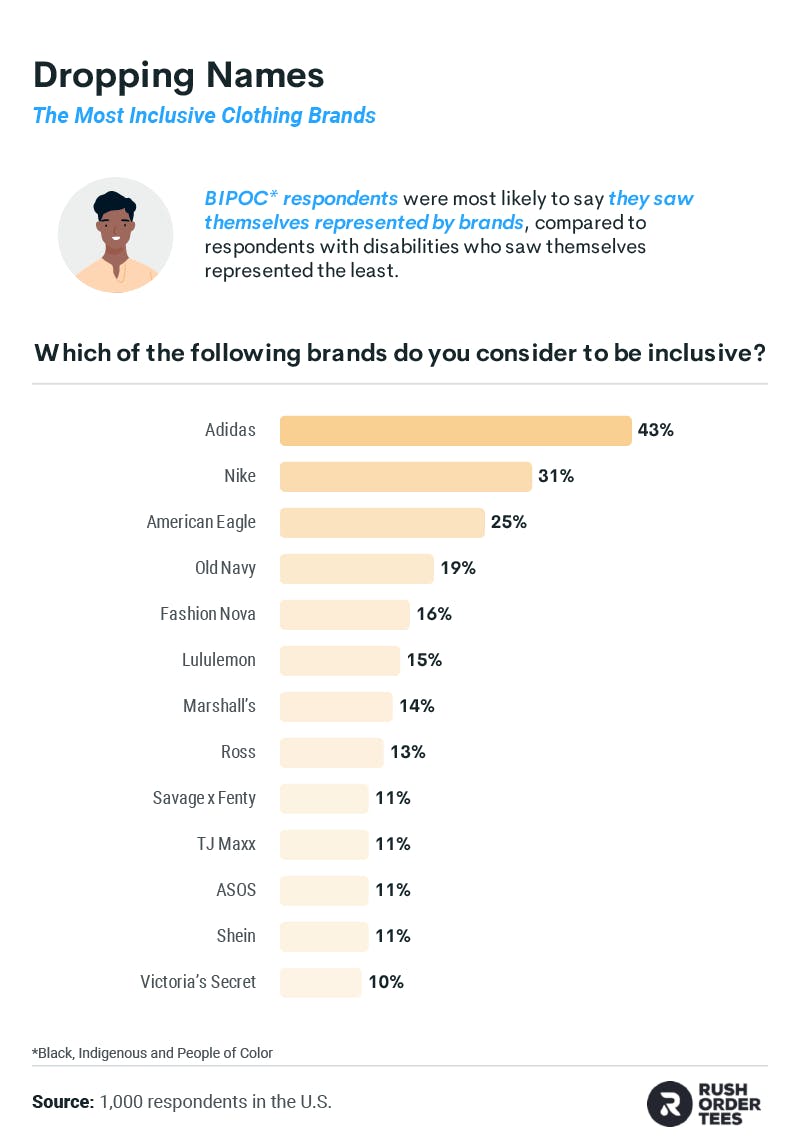
Forty-three percent of respondents ranked Adidas as the most inclusive brand. Other brands that ranked highly in terms of inclusivity were Nike (31%), American Eagle (25%), and Old Navy (19%). This year Adidas launched their “Impossible is Nothing'' campaign , which displayed diversity by telling the stories of athletes from different sports, genders, and ethnicities. Similarly, Nike’s “You Can’t Stop Us” campaign featured disabled and able-bodied athletes of different genders and races side by side. The ad was narrated by Megan Rapinoe, a professional soccer player and LGBTQ+ activist, and won the 2021 Outstanding Commercial Emmy.
Although both of these brands have done an excellent job of displaying diversity within advertising campaigns, they aren’t on the same level with inclusion in the workplace. Since 2016, BIPOC individuals have accounted for more than half of all Nike employees. In comparison, Adidas reported that only 4.5% of its corporate employees were Black in 2019. These companies also differ when it comes to inclusion in leadership roles. As of last year, Nik’s board of directors included 15% Black and 31% female employees. Meanwhile, Adidas’ executive board was 0% Black and 17% female.
Victoria’s Secret was last place with only 10% of respondents viewing them as inclusive. Although rated low, both have made recent efforts toward inclusion. In the past, Victoria’s Secret has been criticized for being overly sexual catering to what men want to see, and creating unrealistic standards of beauty. However, this year they have rebranded through VS Collective and have featured more diverse models. Megan Rapinoe was also featured in this campaign as well as transgender Brazilian model Valentina Sampaio. An additional element to this rebranding is the inclusion of mannequins of diverse body types.
A Step in the Right Direction
After surveying 1,000 LGBTQ+, plus-sized, BIPOC, disabled, and senior (55+) individuals, we have a better understanding of their sentiments of inclusion within the fashion industry. The majority believed the stores theyshopped at were inclusive and that the industry in general was making positive steps toward being more so. This was demonstrated through specific campaigns by brands respondents deemed inclusive. However, the industry could make changes to increase inclusivity such as engaging in more inclusive hiring practices or extending in-store size ranges.
Looking for clothing that fully expresses your identity but can’t find it in store? Visit RushOrderTees to design your own apparel, with adult sizes up to 3X as well as options for kids available, RushOrderTees has you covered.
Methodology and Limitations
We surveyed 1,000 people about the notion of inclusion in the fashion industry. 249 respondents identified as BIPOC, 410 identified as LGBTQ+, 364 identified as seniors, 229 identified as disabled, and 431 identified as plus-sized. Some respondents fit into more than one category.
50% of respondents were millennials, 6% were Gen Zers, 24% were Gen Xers, and 20% were baby boomers or older. 50% of respondents were women, and 49% were men. 1% identified as nonbinary.
64% of respondents identified as heterosexual, 28% identified as bisexual, 5% identified as homosexual, and 3% identified as asexual. Results could have had the potential of being more conclusive and representative with a higher percentage of homosexual participants.
The data are based on self-reporting. With self-reported data, there are limitations, such as the over- or underreporting of information as well as exaggerated numbers and answers.
Fair Use Statement
Want to spread awareness about the upward trend of inclusivity in the fashion industry? Feel free to share this article for noncommercial purposes. All we ask is that you link back to this article so it too can get the representation it deserves.
